Traduzione generata automaticamente
Mostra originale
Mostra traduzione
Lithograph after Georges Braque From the deluxe art review, Derrière le Mirroir 1964 Printed signature Dimensions: 38 x 28 cm DLM No. 148, 1964 Edition: Foundation Maeght at Saint Paul The father of Cubism Three Cubist that distinguishes art historian periods were initiated and developed by Georges Braque: The Cubist Cézanne (1907-1909), Executive (1909-1912) and synthetic (1912-1922). Post-Impressionist and fawn, Braque no longer adheres to the contingency of a decorative way or the other. Cézanne’s paintings exhibited at the Grand Palais during the retrospective of 1907 are a revelation: Cézanne sought and invented a pictorial language. In his footsteps, Braque went to the South with the reasons of the Master. He returned with Estaque landscapes and surprising Ciotat it keeps Cezanne geometric model and retains the “passages” continuity from one surface to another to create the sensation of “turning around” of the object represented. But he wants to go after the consequences of the vision of Cezanne. In his paintings Houses in L’Estaque (1908) it simplifies the volumes of houses, neglects detail by removing doors and windows: the plastic rhythm that builds the table. Large Nude , a masterpiece of the period, can be considered the first work of Cézanne cubism . Systematizing and deepening Braque discoveries open the door analytical cubism. In 1909, his painting became more cerebral than sensual. The pattern is recreated in the two-dimensionality of the canvas, leaving aside any illusionistic perspective. In Still Life with Violin, objects are analyzed facets according to their characteristic elements, each facet referring to a particular view of the object. There are so many facets of points selected view: Table reflects the knowledge of the object and the ubiquity of the eye. Moreover, Braque is looking for the essence of the objects in the world rather than their contingency, which explains the absence of light source and use of muted colors (gray, ocher), contingent aspects of the object . But formal logic has stepped facets, erased any anecdote to the object and ultimately led to his painting a hermetic more marked on the edge of abstraction (see the series of Castle Roche-Guyon ). Braque, anxious to keep the concrete and refusing at all costs that the logic of Cubism takes the paintings to abstract, reintroduced signs of reality in his paintings in 1912 marks the beginning of Synthetic Cubism. Historians speak of “signs of real” rather than reality because what interests Braque, this is not to put reality into a table, but to create a painting which, by its language, refers to the real. To do this, he invented two major techniques XX th century inclusions and contributions. The inclusions consist of painting objects that have no real depth, materials (wallpaper in Nature morte aux playing cards faux wood is a pictorial inclusion) or letters (calligraphic inclusion in Portuguese ), made first brush and a few months later stencil. Contributions are defined in contrast with the collage on canvas of foreign materials: glued or sand paper, sawdust, etc.. Regarding the collages, Braque used for the first time in September 1912 a piece of adhesive paper imitating faux wood Compote and Glass , then the packet envelope of tobacco Bock in 1912-1913, or an advertisement in Damier , 1913). Inputs and inclusions refer to an external object in the table, without “emulate” this object. Away from their appearances, objects are represented in closest essence of the objects in the real world sense. This is also the time of Synthetic Cubism that Braque invented paper sculpture. There are, unfortunately, and no one is living proof of a photograph makes it possible to realize: Paper and paperboard. Métamorphoses period(1961-1963). In 1961, Georges Braque worked on a Greek head for the Louvre, which obsesses him, and he wishes to free his mind. He tried several times to bring out the paint and the result was unsatisfactory. He thinks the ultimate metamorphosis its Greek head projected in three dimensions. He calls in his studio of Baron Heger Loewenfeld, master lapidary, and he communicates his enthusiasm during the “fateful encounter.” Nine months later, in honor of the eighty years of Georges Braque, Heger Loewenfeld offers the Master of the ring Circe: the famous Greek head finally exorcised, carved in an onyx. Braque Loewenfeld then asked to identify other issues that haunt him. From dated and signed by Georges Braque, Heger gouaches Loewenfeld shapes works in the fields of jewelery, lapidary art, sculpture and etrog. In September 1962, Heger of Loewenfeld and André Malraux meet the Ministry of Cultural Affairs. The two men share their impressions of aesthetes around the cabinet precious sculptures presented by Baron. Malraux, fascinated, considers that dealing with “the apotheosis of Braque” and orders on the field that show these masterpieces he calls the “jewels” to be organized at the earliest. March 1963, the exhibition “Bijoux de Braque” opens in the Louvre, Pavillon Marsan. It is a success, and the exposure is prolonged until mid-May. While “Jewelry Braque” travel on the France towards New York, Georges Braque off August 31, 1963. For thirty years, Heger Loewenfeld present collection of millions of enthusiastic spectators worldwide. At the death of Loewenfeld Heger, Armand Israel succeeded him. Georges Braque – his life (1882-1963) 1882 (May 13): Born in Argenteuil. The grandfather Georges Braque has a painting business. 1890 : The Braque family moved to Le Havre. The father founded a painting business building. 1893 : If enrolled in evening classes of Fine Arts. 1899 Before finishing his studies, apprenticed to his father, then in a decorative painting contractor. 1900 : Continues his apprenticeship as a painter and decorator in Paris. Comes to drawing lessons from the municipal workshop Batignolles. 1901-1902 : Military service near Le Havre. 1902 : Moves to Montmartre and enrolled at the Académie Humbert. 1905 :’s Fauves at the Salon d’Automne. 1906 : First exposure XXII th Salon des Independants. From June 12 to September 11: trip to Antwerp with Friesz where he made his first paintings cats . 1907 : In XXIII th Salon des Independants (March), sells his paintings to art critic Wilhelm Uhde and Kahnweiler merchant of German origin. Continued his wild paintings La Ciotat with Friesz (May), L’Estaque (late September and again in October and November). Between gradually into contact with Picasso. 1908 : Third stay at L’Estaque (end of May). The Salon d’Automne refuses paintings made by Braque, the truly innovative style. Kahnweiler them immediately accepts and organizes the first solo exhibition of the artist. The catalog is prefaced by Apollinaire. The critic Louis Vauxcelles discovers “cubes”: the birth of cubism . Together more closely with Picasso, almost daily, Braque compared to a “mountain climber.” 1912 : Moves with Octavia (known Marcelle) Lapré. Spends the summer with Picasso in Avignon. Signed his first contract with Kahnweiler (November). 1914 : Mobilized. Kahnweiler gallery is taken as “property belonging to the enemy,” with all Cubist Braque paintings. 1915 : Injured, Braque trepanated 1916 : Discharged, he returned in Avignon 1917 : Start writing his Notebook Publishes “Thoughts and reflections on the painting” in the North-South magazine . Sign a contract with the dealer Léonce Rosenberg. 1918 : Starts his drawings Diaries. 1919 : Expose gallery in The Effort Moderne Léonce Rosenberg. 1921 : Selling his paintings belonging to the receiver Kahnweiler. At the Hotel Drouot, boxing Léonce Rosenberg, whom he accuses of selling his paintings at a low price. 1923 : The last fires were extinguished Cubism, Braque looking for a new breath. Sign a contract with the art dealer Paul Rosenberg. 1925 : Moves in her new house and studio built by Auguste Perret, near the Parc Montsouris in Paris. 1926 (14 November): Wife Octavia Lapré to Paris in 14 th district. 1929 : In fact develop a home-workshop Varengeville-sur-Mer, Normandy. During the Occupation , is in Paris. 1947 is the new dealer Aimé Maeght. 1948 : Grand Prix for Painting at the Biennale in Venice. Maeght publish editions Notebook Georges Braque (1917-1947). 1953 : Braque realizes the ceiling of the Louvre Henri II room. 1954 : Decoration Mas Bernard Saint-Paul-de-Vence. Creating windows for the church of Varengeville. Interview with Dora Vallier in the journal Cahiers d’art. 1960 : Exhibition of his graphic work at the National Library. 1961 : Exhibition Workshop Braque at the Louvre. Meet Heger of Loewenfeld. 1963 : Exhibition Jewelry Braque , the Museum of Decorative Arts (March-May). Death (August 31) while the collection “Les Bijoux de Braque” come to New York aboard the ship France . Funeral Oration in front of the colonnade of the Louvre, pronounced by André Malraux, Minister of State for Cultural Affairs and broadcast on ORTF (September 3). Burial in the marine cemetery Varengeville-sur-Mer (September 4).
Litografia da Georges Braque Dalla rivista d'arte deluxe, Derrière le Mirroir 1964 Firma stampata Dimensioni: 38 x 28 cm DLM No. 148, 1964 Edizione: Fondazione Maeght a Saint Paul Il padre del cubismo Tre cubista che distingue i periodi storici dell'arte sono stati avviati e sviluppati da Georges Braque: Il cubista Cézanne (1907-1909), esecutivo (1909-1912) e sintetico (1912-1922). Post-impressionista e fulvo, Braque non aderisce più alla contingenza di un modo decorativo o dell'altro. I quadri di Cézanne esposti al Grand Palais durante la retrospettiva del 1907 sono una rivelazione: Cézanne ha cercato e inventato un linguaggio pittorico. Sulle sue orme, Braque va al Sud con le ragioni del Maestro. Torna con i paesaggi dell'Estaque e sorprende Ciotat che mantiene il modello geometrico di Cézanne e conserva la continuità dei "passaggi" da una superficie all'altra per creare la sensazione di "girare intorno" all'oggetto rappresentato. Ma vuole andare dietro alle conseguenze della visione di Cezanne. Nei suoi dipinti Case a L'Estaque (1908) semplifica i volumi delle case, trascura i dettagli eliminando porte e finestre: il ritmo plastico che costruisce la tavola. Grande nudo , un capolavoro del periodo, può essere considerato il primo lavoro del cubismo di Cézanne . Sistematizzando e approfondendo le scoperte di Braque apre la porta cubismo analitico. Nel 1909, la sua pittura diventa più cerebrale che sensuale. Il modello è ricreato nella bidimensionalità della tela, lasciando da parte qualsiasi prospettiva illusionistica. In Natura morta con violino, gli oggetti sono analizzati sfaccettature secondo i loro elementi caratteristici, ogni sfaccettatura si riferisce ad una vista particolare dell'oggetto. Ci sono così tante sfaccettature di punti di vista selezionati: La tavola riflette la conoscenza dell'oggetto e l'ubiquità dell'occhio. Inoltre, Braque sta cercando l'essenza degli oggetti nel mondo piuttosto che la loro contingenza, che spiega l'assenza di fonte di luce e l'uso di colori tenui (grigio, ocra), aspetti contingenti dell'oggetto. Ma la logica formale ha fatto un passo sfaccettato, cancellato qualsiasi aneddoto per l'oggetto e, infine, ha portato alla sua pittura un ermetico più marcato sul bordo dell'astrazione (vedi la serie del Castello Roche-Guyon). Braque, ansioso di mantenere il concreto e rifiutando a tutti i costi che la logica del cubismo prende i dipinti di astratto, reintrodotto segni di realtà nei suoi dipinti nel 1912 segna l'inizio del cubismo sintetico. Gli storici parlano di "segni del reale" piuttosto che la realtà perché ciò che interessa Braque, questo non è quello di mettere la realtà in una tabella, ma di creare una pittura che, con il suo linguaggio, si riferisce al reale. Per fare questo, ha inventato due grandi tecniche XX secolo inclusioni e contributi. Le inclusioni consistono nella pittura di oggetti che non hanno profondità reale, materiali (carta da parati in Nature morte aux carte da gioco finto legno è una inclusione pittorica) o lettere (inclusione calligrafica in portoghese ), fatto prima pennello e pochi mesi dopo stencil. I contributi sono definiti in contrasto con il collage su tela di materiali estranei: carta incollata o sabbia, segatura, ecc. Per quanto riguarda i collage, Braque ha utilizzato per la prima volta nel settembre 1912 un pezzo di carta adesiva che imitava il finto legno Compote and Glass , poi la busta del pacchetto di tabacco Bock nel 1912-1913, o una pubblicità di Damier , 1913). Gli ingressi e le inclusioni si riferiscono a un oggetto esterno nella tavola, senza "emulare" questo oggetto. Lontano dalle loro apparenze, gli oggetti sono rappresentati nell'essenza più vicina degli oggetti nel senso del mondo reale. Questa è anche l'epoca del cubismo sintetico che Braque inventa la scultura di carta. Ci sono, purtroppo, e nessuno è la prova vivente di una fotografia rende possibile la realizzazione: Carta e cartone. Periodo di Métamorphoses (1961-1963). Nel 1961, Georges Braque lavora su una testa greca per il Louvre, che lo ossessiona, e vuole liberare la sua mente. Tenta varie volte di far uscire la pittura e il risultato è insoddisfacente. Pensa che la metamorfosi definitiva sia la sua testa greca proiettata in tre dimensioni. Chiama nel suo studio il barone Heger Loewenfeld, maestro lapidario, e gli comunica il suo entusiasmo durante il "fatidico incontro" Nove mesi dopo, in onore degli ottant'anni di Georges Braque, Heger Loewenfeld offre al Maestro dell'anello Circe: la famosa testa greca finalmente esorcizzata, scolpita in un onice. Braque Loewenfeld ha poi chiesto di identificare altre questioni che lo tormentano. Da datato e firmato da Georges Braque, Heger gouaches Loewenfeld forme opere nel campo della gioielleria, arte lapidaria, scultura e etrog. Nel settembre 1962, Heger di Loewenfeld e André Malraux incontrano il Ministero degli Affari Culturali. I due uomini condividono le loro impressioni di esteti intorno al gabinetto di sculture preziose presentato da Baron. Malraux, affascinato, ritiene che trattare con "l'apoteosi di Braque" e ordini sul campo che mostrano questi capolavori egli chiama i "gioielli" per essere organizzato al più presto. Marzo 1963, la mostra "Bijoux de Braque" si apre al Louvre, Pavillon Marsan. È un successo, e l'esposizione viene prolungata fino a metà maggio. Mentre "Bijoux Braque" viaggia sulla Francia verso New York, Georges Braque si spegne il 31 agosto 1963. Per trenta anni, Heger Loewenfeld presente collezione di milioni di spettatori entusiasti in tutto il mondo. Alla morte di Loewenfeld Heger, Armand Israel gli succedette. Georges Braque - la sua vita (1882-1963) 1882 (13 maggio): Nato ad Argenteuil. Il nonno Georges Braque ha un'impresa di pittura. 1890 : La famiglia Braque si trasferisce a Le Havre. Il padre fonda un edificio per la pittura. 1893 : Si iscrive ai corsi serali di Belle Arti. 1899 : Prima di terminare i suoi studi, apprendista presso suo padre, poi in un'impresa di pittura decorativa. 1900 : Continua il suo apprendistato come pittore e decoratore a Parigi. Viene a lezioni di disegno dal laboratorio comunale Batignolles. 1901-1902 : Servizio militare vicino a Le Havre. 1902 : Si trasferisce a Montmartre e si iscrive all'Académie Humbert. 1905 : Fauves al Salon d'Automne. 1906 : Prima esposizione XXII Salon des Independants. Dal 12 giugno all'11 settembre: viaggio ad Anversa con Friesz dove realizza i suoi primi quadri gatti. 1907 : Al XXIII° Salon des Independants (marzo), vende i suoi quadri al critico d'arte Wilhelm Uhde e al mercante di origine tedesca Kahnweiler. Continua i suoi dipinti selvaggi La Ciotat con Friesz (maggio), L'Estaque (fine settembre e ancora in ottobre e novembre). Tra gradualmente in contatto con Picasso. 1908 : Terzo soggiorno a L'Estaque (fine maggio). Il Salon d'Automne rifiuta i quadri fatti da Braque, lo stile veramente innovativo. Kahnweiler li accetta immediatamente e organizza la prima mostra personale dell'artista. Il catalogo è preceduto da Apollinaire. Il critico Louis Vauxcelles scopre i "cubi": la nascita del cubismo. Insieme più strettamente con Picasso, quasi quotidianamente, Braque paragonato a un "scalatore di montagne" 1912 : Si trasferisce con Octavia (conosciuta come Marcelle) Lapré. Passa l'estate con Picasso ad Avignone. Firma il suo primo contratto con Kahnweiler (novembre). 1914 : Mobilitato. La galleria Kahnweiler è presa come "proprietà del nemico", con tutti i quadri cubisti di Braque. 1915 : Ferito, Braque viene trapanato 1916 : Congedato, ritorna ad Avignone 1917 : Inizia a scrivere il suo Quaderno Pubblica "Pensieri e riflessioni sulla pittura" nella rivista Nord-Sud. Firma un contratto con il commerciante Léonce Rosenberg. 1918 : Inizia i suoi Diari di disegni. 1919 : Espone nella galleria L'Effort Moderne Léonce Rosenberg. 1921 : Vendita dei suoi quadri appartenenti al ricevitore Kahnweiler. All'Hotel Drouot, pugilato con Léonce Rosenberg, che accusa di vendere i suoi quadri a basso prezzo. 1923 : Gli ultimi fuochi sono stati spenti Cubismo, Braque cerca un nuovo respiro. Firma un contratto con il mercante d'arte Paul Rosenberg. 1925 : Si trasferisce nella sua nuova casa e studio costruito da Auguste Perret, vicino al Parc Montsouris a Parigi. 1926 (14 novembre): Moglie Octavia Lapré a Parigi nel 14° distretto. 1929 : In effetti sviluppare una casa-laboratorio Varengeville-sur-Mer, Normandia. Durante l'occupazione, è a Parigi. 1947 è il nuovo rivenditore Aimé Maeght. 1948 : Gran premio di pittura alla Biennale di Venezia. Maeght pubblica edizioni Notebook Georges Braque (1917-1947). 1953 : Braque realizza il soffitto della sala Henri II del Louvre. 1954 : Decorazione Mas Bernard Saint-Paul-de-Vence. Creazione di finestre per la chiesa di Varengeville. Intervista con Dora Vallier nella rivista Cahiers d'art. 1960 : Esposizione della sua opera grafica alla Biblioteca Nazionale. 1961 : Mostra Laboratorio Braque al Louvre. Incontro con Heger di Loewenfeld. 1963 : Mostra Gioielli Braque, Museo delle Arti Decorative (marzo-maggio). Morte (31 agosto) mentre la collezione "Les Bijoux de Braque" viene a New York a bordo della nave Francia. Orazione funebre davanti al colonnato del Louvre, pronunciata da André Malraux, ministro degli affari culturali e trasmessa su ORTF (3 settembre). Sepoltura nel cimitero marino di Varengeville-sur-Mer (4 settembre).
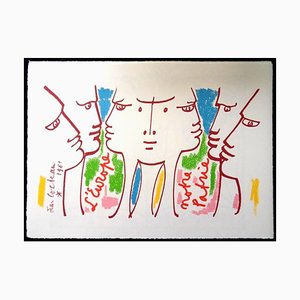

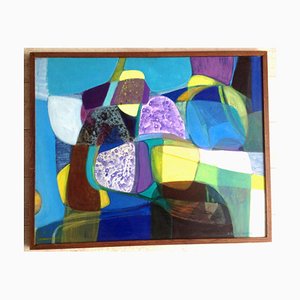
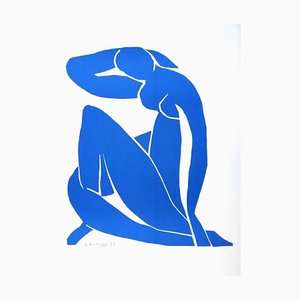
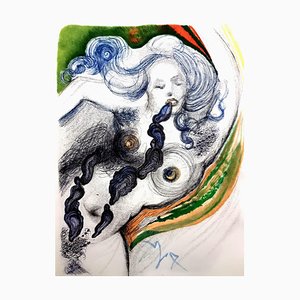
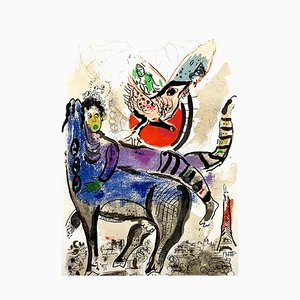
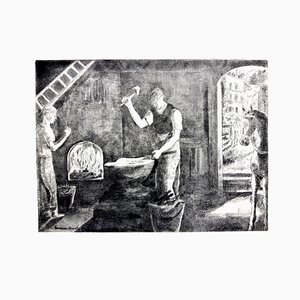
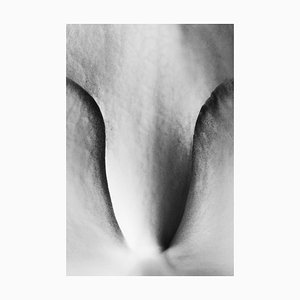
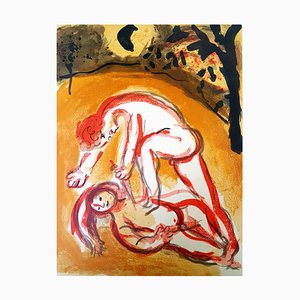
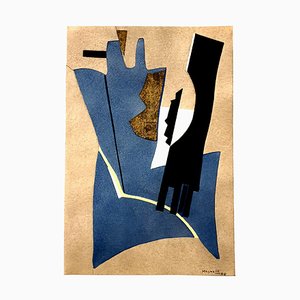
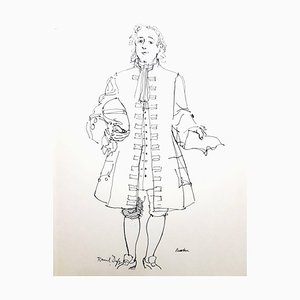
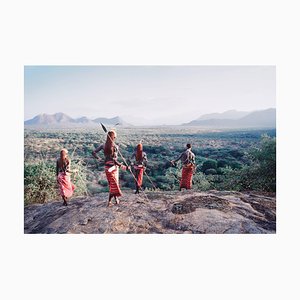
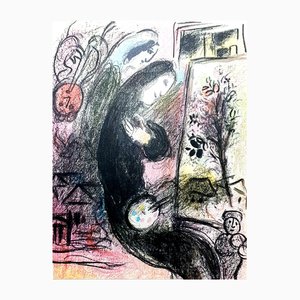
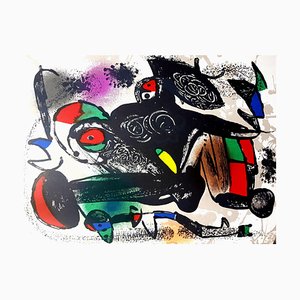
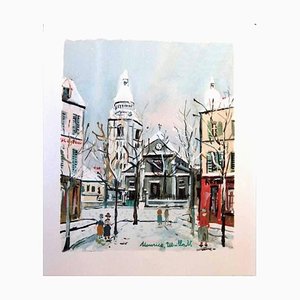
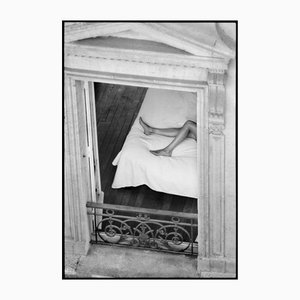
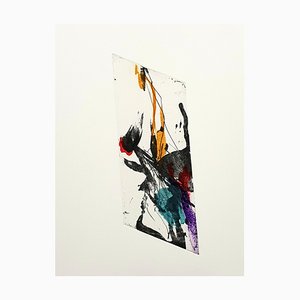
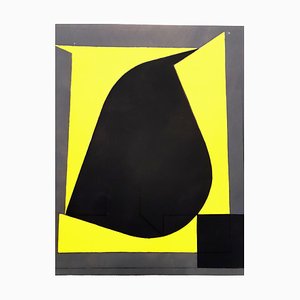
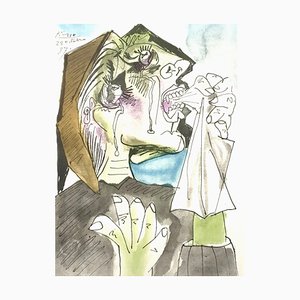
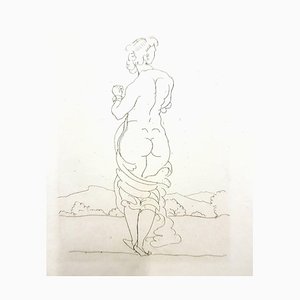
Contattaci
Fai un'offerta
Abbiamo notato che sei nuovo su Pamono!
Accetta i Termini e condizioni e l'Informativa sulla privacy
Contattaci
Fai un'offerta
Ci siamo quasi!
Per seguire la conversazione sulla piattaforma, si prega di completare la registrazione. Per procedere con la tua offerta sulla piattaforma, ti preghiamo di completare la registrazione.Successo
Grazie per la vostra richiesta, qualcuno del nostro team vi contatterà a breve.
Se sei un professionista del design, fai domanda qui per i vantaggi del Programma Commerciale di Pamono